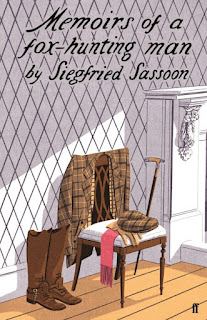The 1970s and the Birth of Internet Dating
Machines are like servants; they fulfill our everyday needs. Today’s
communicative technology, with its focus on facilitating our social relationships, reflects our core desires. People want relationships, thus technology helps us meet others who share our interests. The recent emergence of computer dating illustrates this point. Beginning in the late 1960s, businessmen created computer dating during a time of great social-sexual change. Both British and American investors saw the marketing
potential of computerised match-making and cultivated its growth. At the centre of this story is the
making of the ‘single’ as a more familiar and concrete term of identity.
In a recent article, Zoe Strimpel focuses on the marketing
strategies of Dateline International, a computer dating agency, to offer a new
insight into the ‘anxieties surrounding romantic status in post-1960s Britain’ (p.
319). She argues that Dateline employed a ‘self-positioning strategy’ which countered
concerns over the mediation of machines in amorous match-making. It tied itself
‘with wider anxieties about emotional life [such as loneliness]’ by justifying its cause to the public throughout the
1970s (p. 320).
In mid-twentieth century Britain, the
single-occupant household began to rise. National surveys showed that the
number of single people rose by almost 10% between 1970 and 1998 (p. 323). Strimpel
explains that the reasons for this are complex, including, among other factors, the loosening of ties
between sex and marriage. In the 1970s, the rise of single men and women gave computer dating a sense of commercial authority - more people were
now applicable to the promises it offered.
Pre-internet computer courtship marketed
itself via two strands: through technological prowess and the claims of psychology.
Strimpel observes that ‘Dateline proposed itself as a modern solution to a
modern situation’ (p. 323). These features
intended to sell Dateline through what Strimpel calls a ‘double-punch’ strategy.
In the London Underground, for
instance, Dateline adverts tackled potential user scepticism over the role
computers played in their match-making process. The premise was this: Dateline
possessed a super-computer that read punch-cards specifying the person’s traits
and matched potential couples based on the card’s similarities for the fee of
£50 (shocking!).
But these claims to a ‘super-computer’
were much about rhetorical lingo as they were about reality. Adverts reassured
customers of the machine’s positive role – that users should never be ashamed to use technology in their quest for love. As such, these adverts tapped into the language
of faith to sell Dateline’s service, vowing to make customer’s a ‘believer in
computer dating’ (p. 326). (As shown by my example, this mode of thought persisted
in the 1980s which asserts success through a powerful two-word statement: ‘Dateline
Works!’). Ultimately, Strimpel argues, this strategy tackled the social stigmas
that surrounded computer dating by selling the service through the ‘awe of modern machinery’
(p. 325).
 |
| Dateline advertised in a British magazine, 1986. © The List. |
Dateline’s second strategy focused on
the ‘wisdom of human insight’. The agency deployed the language of
psychological know-how, making the case for the benefits of their personality matching
system in the quest for the customer’s romantic destiny.
This process, quite alarmingly, redefined
notions of ‘selfhood’, forcing customers to map their personality onto multiple-choice
questionnaires. This being so, the status of ‘the single’ became a staple of the customer's identity. This was about finding ‘the one’ in a field now filled with
various personality types. So-called ‘experts’, Strimpel says, constructed this
notion which set the stage ‘for what would eventually become the backbone of
major dating sites such as Eharmony’ (p. 331).
Today, almost everyone possesses a
super-computer in their pocket. Whilst ‘expertise’ drove Dateline’s business,
today’s world has no need for such mediators. Online dating focuses on the
individual will, crafting a user profile to match their requirements. Although electronic platforms like
Tinder facilitate computer dating, it is now up to us, ourselves, rather than
the computer’s logic, to pick and choose partners. Agency is key to these
contemporary sites.
Electronic dating created fears in the
past which persist today. For instance, the writer, Jill Tweedie, said in 1970 that she felt terrible about the way ‘the computer has moved into the [realm]
of love’. No computer, she continued, ‘however flashy its innards’ can ever introduce
you to anyone whose details are not within its electronic jaws (p. 328). In
other words, singles place too much faith in the computer’s match-making
process.
In the age of social media, we need to
view dating apps as mere utensils and nothing more. Our self-representations on
the web are never true to our self-perceptions: we craft ideal images of ourselves
to attract potential partners. But we can still step away from the smartphone screen.
Beyond this, internet love wields the power to consume. A healthy balancing act
between reality and technology is the best way forward.
Source:
Zoe
Strimpel, ‘Computer Dating in the 1970s: Dateline and the making of the modern
British single’ Contemporary British
History, 31/3 (2017), pp 319-42.


Comments
Post a Comment